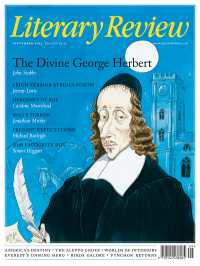Jonathan Mirsky
Mao’s Willing Executioners
The Tragedy of Liberation: A History of the Chinese Revolution 1945–57
By Frank Dikötter
Bloomsbury 376pp £25
‘In brutal fact, between 1959 and 1962, at least forty-three million Chinese died during the famine ... The cause of this disaster, the worst ever to befall China and one of the worst anywhere at any time, was Mao.’ I wrote those words in these pages when reviewing Frank Dikötter’s Mao’s Great Famine: The History of China’s Most Devastating Catastrophe, 1958–62; I now see that both those words and Dikötter’s title were mistaken. The Chinese famine was indeed one of the worst in world history, but the real disaster for China, until his death in 1976, was Mao himself, the man whose gigantic portrait still gazes down from Beijing’s Forbidden City onto Tiananmen Square.
This is clearer than ever in Dikötter’s path-breaking new book on the years 1945 to 1957, the period that the Chinese call ‘Liberation’. Beyond everything else, he shows us that Mao ‘liked killing’, as Li Rui, one of his secretaries, put it some years ago to a Harvard symposium on

Sign Up to our newsletter
Receive free articles, highlights from the archive, news, details of prizes, and much more.@Lit_Review
Follow Literary Review on Twitter
Twitter Feed
The era of dollar dominance might be coming to an end. But if not the dollar, which currency will be the backbone of the global economic system?
@HowardJDavies weighs up the alternatives.
Howard Davies - Greenbacks Down, First Editions Up
Howard Davies: Greenbacks Down, First Editions Up - Our Dollar, Your Problem: An Insider’s View of Seven Turbulent...
literaryreview.co.uk
Johannes Gutenberg cut corners at every turn when putting together his bible. How, then, did his creation achieve such renown?
@JosephHone_ investigates.
Joseph Hone - Start the Presses!
Joseph Hone: Start the Presses! - Johannes Gutenberg: A Biography in Books by Eric Marshall White
literaryreview.co.uk
Convinced of her own brilliance, Gertrude Stein wished to be ‘as popular as Gilbert and Sullivan’ and laboured tirelessly to ensure that her celebrity would outlive her.
@sophieolive examines the real Stein.
Sophie Oliver - The Once & Future Genius
Sophie Oliver: The Once & Future Genius - Gertrude Stein: An Afterlife by Francesca Wade
literaryreview.co.uk